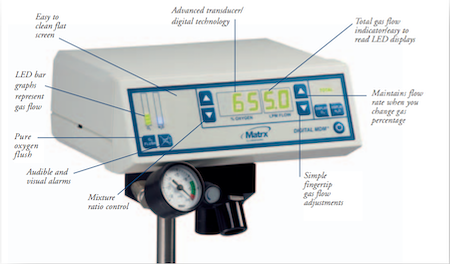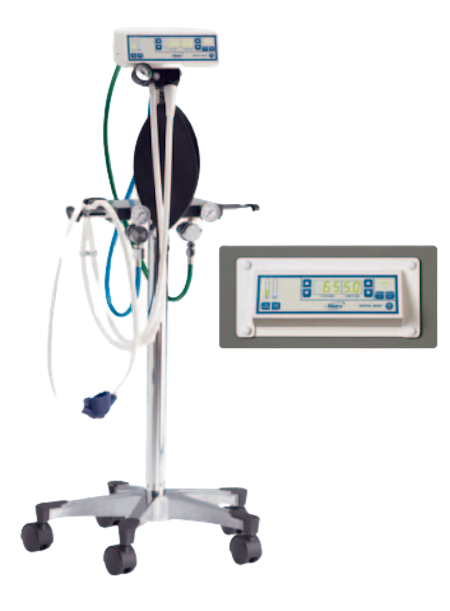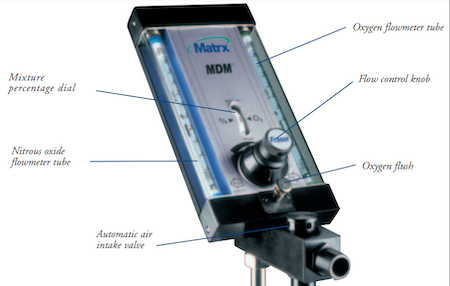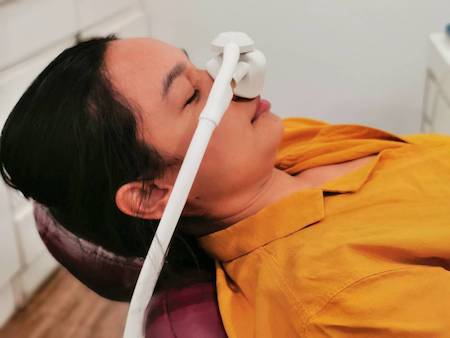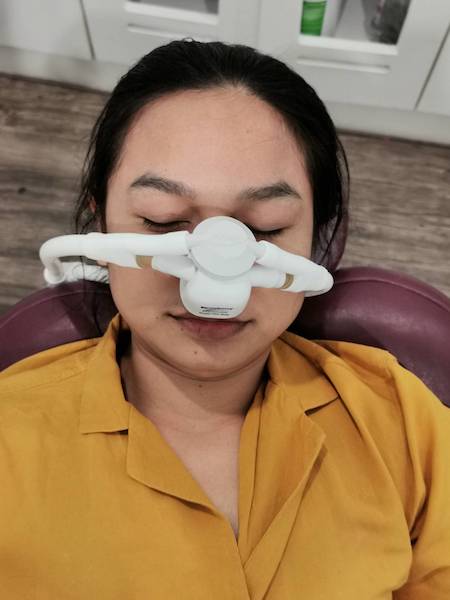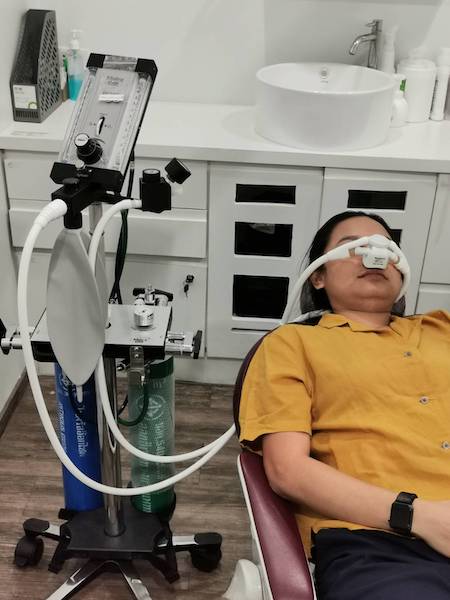Preventive Care
- Introduction
- Check up
- Oral hygiene care
- Fluoride
- Sealant
- Laughing Gas Sedation
Introduction
One major Truth about taking care of your Tooth is preventive care works
A Healthy Mouth is the Gateway to a Healthy Body
Good oral health contributes to your overall health.Gingivitis, the earliest form of gum disease, can be painless and easily overlooked. However, when treated at this stage, it can be easily managed. Left untreated it can quickly lead to periodontitis, an irreversible condition that destroys the bone that holds the teeth in place. Periodontitis can lead to tooth loss and has been associated with very serious medical conditions including:
• heart disease
• Alzheimer’s disease
• cancer
• stroke
• diabetes
• adverse pregnancy outcomes
• obesity
• sleep apnea
• ENT
Thai Dental
Check up
Comprehensive Dental Exams
Your oral health is not just about maintaining a beautiful smile but gums and teeth are a vital part of your overall health. Gum disease has been linked to serious health conditions, including strokes, type 2 diabetes, pregnancy issues, and more. A proper periodontal or dental issue identification can…..any that need treatment. The quicker we can catch a potential oral health issue, the faster we can offer treatment, protecting your health and saving you time, pain, and money in the long run.
- Review and update your medical history
- Perform a thorough gum pocket check - 6 points per tooth
- Take all necessary digital X-rays
- Perform comprehensive scaling and polishing
- Review and update oral hygiene instruction
- Check for TMJ and bite problems
Benefit
You’ll save money.
Some people think going for a regular check-up is an unnecessary expense, but it’s really just the opposite. The earlier a condition is spotted and treated, the better. In fact, a regular check-up can save you hundreds of dollars in procedures that would otherwise be unnecessary if a condition is treated immediately, before it gets worse.
Your dental history is recorded.
When you have a regular dentist that you go to each time for check-ups and for all the procedures that you need for your teeth, your history is recorded – all your extractions, fillings, and conditions (such as gingivitis and others). Having a dental history is important especially if you have a condition that needs to be treated, so going to the same dentist or at least the same dental office over a period of time is also beneficial.
Your oral hygiene and dental health improves.
A lot of people take oral health for granted, but going to a regular check-up will help you because your dentist can recommend certain practices that can improve your oral hygiene. Your dentist can help pinpoint aspects of your oral health that need improvement, and, when you maintain regular check-ups, you also tend to be more conscious and proactive in taking care of your teeth.

Oral hygiene care
- Brushing thoroughly, twice a day, should be the last thing you do at night and at least one other time during the day.
- Clean between the teeth with “interdental” brushes or floss at least once a day.
- Eat a balanced diet and limit snacks between meals.
- Using dental products that contain fluoride, including toothpaste, and consider fluoride application in the case of children under 12 or adults with potential dental caries forming.
- Regular dental check-ups.
Tools:
1) Tooth brush- A soft tooth brush is recommended.
- For the front of your front teeth, angle your brush at about 45 degrees and brush in small circular motions. This will also massage your gums while removing plaque.
- For the back of your front teeth, hold your brush vertically and brush up and down ensuring you brush your gums as well as your tooth surface. Brush each tooth individually.
- For your back teeth use a horizontal forward and back motion across the top of your teeth, this will help the bristles get into the deep grooves. Then tilt your brush to 45 degrees – like for your front teeth – and brush the outside and inside of your back teeth and gums.
- A thorough brushing routine should take between 2 – 3 minutes.
Cleaning in between your teeth removes plaque and bits of food from between your teeth and under your gum line - areas a toothbrush can't reach. When flossing or using interdental brushes, keep to a regular pattern and remember not to miss any teeth. It helps to look in the mirror. It is also very important to clean around the edges of any crowns, bridges, or implants. You should clean between your teeth at least once a day.
- Break off about 45 centimeters (18 inches) of floss, and wind some around one finger of each hand.
- Hold the floss tightly between your thumbs and forefingers, with about an inch of floss between them, leaving no slack. Use a gentle “rocking” motion to guide the floss between your teeth. Do not jerk the floss or snap the floss into the gums.
- When the floss reaches your gum line, curve it into a C-shape against one tooth until you feel resistance.
- Hold the floss against the tooth. Gently scrape the side of the tooth, moving the floss away from the gum. Repeat on the other side of the gap, along the side of the next tooth.
- Don't forget the back of your last tooth. Again, keep to a regular pattern. Start at the top and work from left to right, then move to the bottom and again work from the left to right. This way you're less likely to miss any teeth.
Interdental brushes serve as an alternative to flossing; they can be used daily and can be more effective for interproximal plaque removal than floss as suggested by a number of studies. Interdental brushes, depending on their size and shape as well as the surfaces of the teeth, can prove to be effective tools for reducing interproximal plaque.
4) Oral irrigatorsOral irrigators use a stream or jet of water to remove plaque and bits of food from around your teeth or an orthodontic appliance (“brace”). Oral irrigators might also be recommended for:
- a fixed bridge that is difficult to clean.
- crooked teeth.
- if you find it difficult to use interdental brushes or floss.
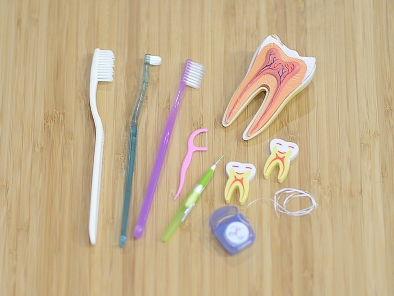
Fluoride
More than 70 years of scientific research has consistently shown that an optimal level of fluoride in community water is safe and effective in preventing tooth decay by at least 25% in both children and adults.
Fluoride benefits both children and adults.
Before teeth break through the gums, the fluoride taken in from foods, beverages, and dietary supplements makes tooth enamel (the hard surface of the tooth) stronger, making it easier to resist tooth decay. This provides what is called a "systemic" benefit.
After teeth erupt, fluoride helps rebuild (remineralize) weakened tooth enamel and reverses early signs of tooth decay. When you brush your teeth with fluoride toothpaste, or use other fluoride dental products, the fluoride is applied to the surface of your teeth. This provides what is called a "topical" benefit.
In addition, the fluoride you take in from foods and beverages continues to provide a topical benefit because it becomes part of your saliva, constantly bathing the teeth with tiny amounts of fluoride that help rebuild weakened tooth enamel.
Indications that fluoride might be needed:
- poor oral hygiene
- active caries
- eating disorders
- drug or alcohol abuse
- lack of regular professional dental care
- active orthodontic treatment
- poor oral hygiene
- high levels of caries-causing bacteria in the mouth
Type
- By tray
- Fluoride varnish
- Mouthwash
- Fluoride tablet
Pro
- Remineralize weakened tooth surface against caries forming
Cons
- Possible nausea or vomiting for over fluoridation
- Create fluorosis or white spot on tooth surface in over fluoridation
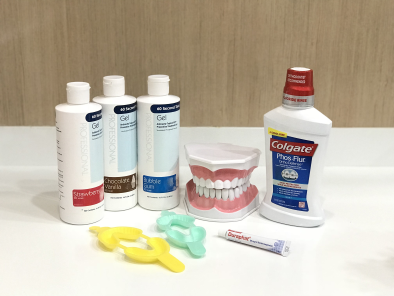
Sealant
Sealants are thin layers of resin that are placed on the pits, fissures, and grooves of molars to prevent decay on these surfaces.
The majority of decay on the back teeth starts in the grooves and pits of chewing surfaces, especially during the first few years after their eruption. Sealing these surfaces with composite resins prevents this kind of decay.
Sealants are one of the most effective methods of preventing decay on the surfaces where they are placed. Although it is still a possibility that decay may develop on surfaces in between teeth, sealants significantly reduce the overall chance of having cavities.
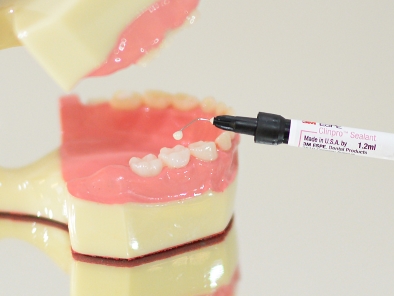
Laughing Gas Sedation
Nitrous Oxide provides safer, quicker and more comfortable dental care.
Less Fear. Less Anxiety. Lower Pain.
A visit to the dental office is traditionally ranked as one of the leading fears of people from all walks of life. In many cases, it leads to late or broken appointments that disrupt the operation of your practice. There is a solution. Nitrous Oxide.
Thousands of dentists throughout the world have discovered the benefits of using a nitrous oxide/oxygen gas mixer system from Matrx by Midmark to relax apprehensive patients and drastically minimize any feelings of discomfort.
A Matrx N2O/O2 Mixer is simple and safe.
- It allows your patient to breathe more oxygen while enjoying a remarkable depth of relaxation
- It virtually eliminates the fear, nervousness and tension associated with dental procedures
- Your patient remains in complete control, is conscious and can follow directions
- A built-in, fail-safe in every Matrx mixer guarantees nitrous oxide will not flow unless a minimum concentration of 30% oxygen is flowing And best of all, it makes your practice more efficient and profitable.
- Patients are more relaxed so you can accomplish more per visit
- You can work in all four quadrants
- Increased productivity means more income for you Matrx N2O
Mixer equipment, the first choice of dental professionals throughout the world!
Over 45 years ago, Fraser Sweatman pioneered the technology used for safe delivery of nitrous oxide and oxygen sedation. Now, as Matrx by Midmark, that same vision and innovation keeps us a leader in the field of nitrous oxide/oxygen delivery as evidenced by the development and production of the New Digital MDM, the third generation of Matrx electronic mixers.
The Nitrous Oxide Advantage
- Attract patients by offering safe, effective, pain management
- Save time - rapid onset and recovery
- Save money - patients are less anxious resulting in fewer cancelled appointments
- Able to titrate drug to allow precise and incremental control of delivery with no waste
- Relaxed patients remain fully conscious and able to respond to directions
- Easy to administer and control
The Matrx Advantage
- Matrx owns the first patent issued on a percentage mixer
- Matrx MDM® and Digital MDM® flowmeters are designed for titration
- Matrx is the first ISO-9001 certified manufacturer of nitrous oxide delivery systems for the dental industry
- For over 45 years, Matrx has been a leader in dental equipment research and technology
